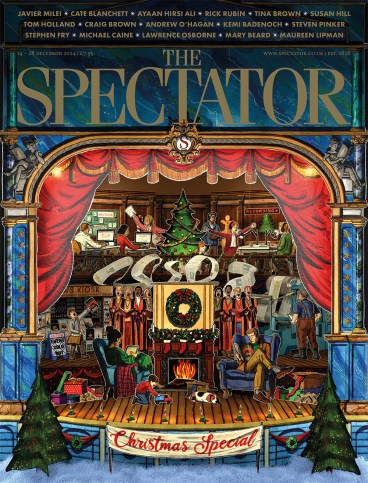
Every Christmas the proportion of money we spend online escalates. This year probably more than a third of all our festive gifts and food will be sourced via the internet. With this will go the usual hand-wringing about consumerism causing neighbourhoods to become clogged up with delivery vans and the death of our high street.
If you think calls to boycott Amazon and entreaties to shop local are a new phenomenon, think again. In 1888, a Tunbridge Wells vicar implored his flock to support the town’s shopkeepers, for ‘the weight of goods arriving at our local stations for private people far exceeds that for the tradesmen’. He was bemoaning the boom in mail order, which flourished in late Victorian Britain thanks to the emergence of the railways and clever retailers. Barratts of Northampton, which still makes shoes, developed the Footshape brand, a gimmick whereby people could draw around their feet and send the picture with their order to ensure the right size. Is this really so different from Bershka, the fashion retailer, recently launching an AI-powered ‘see how it fits on me’ app for people shopping on their phones at home?
The growth in catalogue retailing, the lack of town-centre lavatories, issues with parking (either one’s horse, carriage or car), fussy consumers, rip-off salesmen and moral panic about consumerism – these are concerns that stretch back to when medieval town authorities installed a market cross in Malmesbury, Wiltshire, so that shoppers ‘might think upon their dear Saviour which died for them upon the Crosse’ and ‘rogues and cozeners may look upon it and cease them of their guile’.
There was never a golden age of the high street; it has always been a place of ferocious change, sharp practice, despairing shopkeepers and often enormous fun. That is the central argument of Annie Gray’s enjoyable The Bookshop, the Draper, the Candlestick Maker, which romps through the history of the high street from the Black Death to the death of Blockbuster.
Her speciality is the history of food, so perhaps it is no surprise that she is particularly good on grocers, confectioners and butchers, notably the stench and flies found in a butcher’s shop before refrigeration or electricity, when slaughtermen working at night had candles strapped to their heads like coal miners.
It is stuffed full of fascinating facts along the way. I had no idea that the stock pantomime dame was named after a popular green tea called Twankey, nor that Sainsbury’s in the 1870s installed a ‘mechanical cow’ in their Kentish Road branch in London, allowing shoppers to purchase milk after hours by inserting a coin and pulling a lever. The idea of laying out your wares as if they were in use in a domestic setting should be credited to Josiah Wedgwood and his London showrooms on Greek Street, which were, Gray writes, akin to ‘the less painful part of Ikea’. We learn that toy shops were not originally emporiums for children but stores selling trinkets for wealthy consumers: snuff boxes, painted shells, shoe buckles, fans – anything that allowed you to display your impeccable taste in early Georgian Britain.
What makes the history of the high street so intriguing is that it is also a history of women – and how terrified of women with spending power certain members of society were. As long as there have been drapers, there have been men moaning about women wasting money on fripperies. In 1713, a letter was published in The Spectator from a husband complaining about his wife’s addiction to fashion and how ‘all our goods in my house have been changed three times in seven years’. If they weren’t squandering their husbands’ income, they were almost certainly selling their own bodies. Gray finds plenty of examples of female shopkeepers accused of being prostitutes – an allegation that was rarely (but occasionally) true. Rumours persisted that even in Burlington Arcade a bonnet shop had a back room where sex-workers could take their clients.
It is easy to romanticise the high street of Eric Ravilious, but Gray is refreshingly unsentimental about the days when your evening meal necessitated separate visits to the butcher, greengrocer and baker:
It’s a simple fact that shopping for everything on the high street – as was the case for the majority of households prior to the 1970s – took time and effort and was only possible through the unpaid labour of women or the delegation of shopping to paid servants.
But the simple fact is the UK has more shops now than it did 16 years ago, before the collapse of Woolworths and internet retailers taking off. This is madness: we should have fewer shops, not more.
The reason why we fret so much about our high streets – lambasting the gentrification of Gail’s or despairing at a local Marks & Spencer closing – is because we instinctively understand that they are more than just a collection of shops. They are places to gather, to gossip, to gawp, to be members of society. Whether those premises are an ironmonger’s or a café selling oat-milk cortados is in some ways unimportant. What matters is we have a place where we can just –to use the charming 18th-century term for browsing – ‘tumble’.







Comments